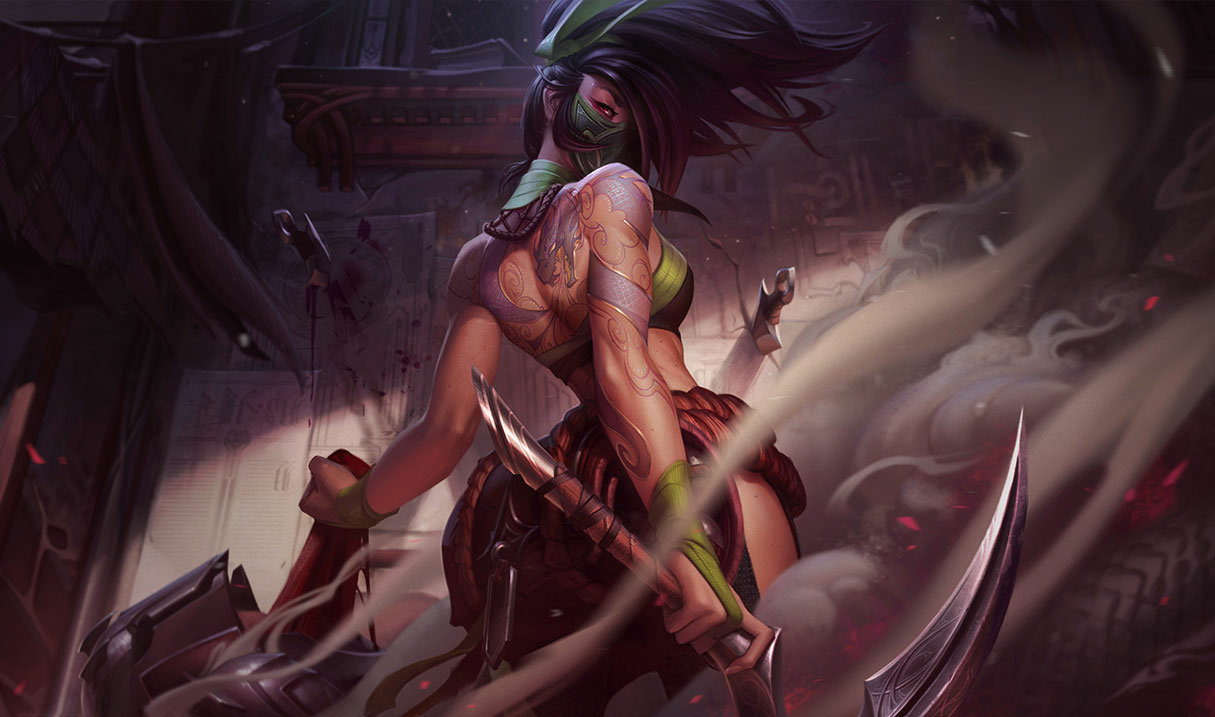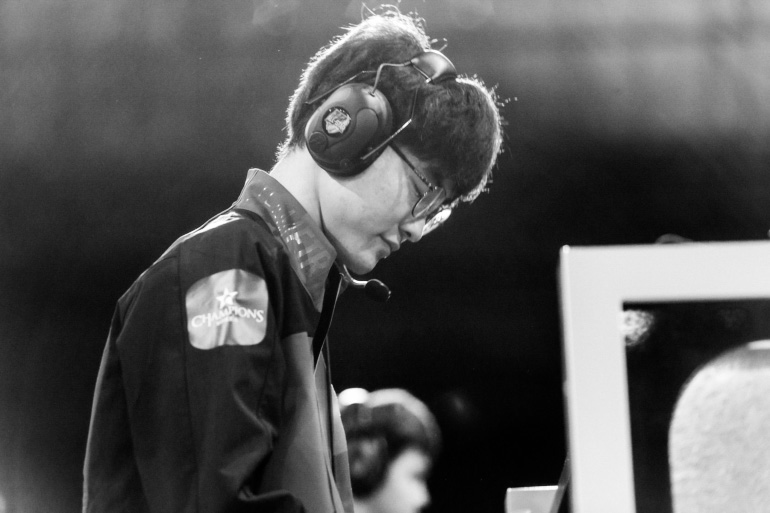There’s something about the League of Legends World Championship being located in South Korea that dooms Lee “Faker” Sang-hyeok and SK Telecom T1. SKT are the only true dynasty in League’s short history as an esport, but the one place where they’ve been unable to win a major international title is in front of their home fans.
The last time SKT missed Worlds was in 2014, when the final was held in the Seoul World Cup Stadium. Missing that tournament seemed to ignite something in Faker and the rest of his team. After retooling slightly for the next season, SKT went on an incredible tear: Two straight Worlds titles and two consecutive MSI championships went to the boys in red, white, and black.
Now that SKT are officially out of the 2018 World Championship by virtue of their 3-2 loss to Gen.G on Wednesday, can they figure out a way to bounce back yet again?
Shades of the past

In the decisive fifth game of the first round in the regional qualifier, Gen.G made a mistake. They left up Akali, one of the game’s most broken mid laners, someone who can kill in an instant and splitpush all game.
Not wanting to give Samsung a do-over, SKT drafted Akali for Faker in the first phase of the draft, before a second set of bans rolled in. Normally, on red side, SKT would want to reserve Faker’s pick for last, so he can counter whatever mid laner Gen.G wanted to play.
But it wasn’t a mistake at all. Gen.G wanted Faker to play Akali and pick her blind, not knowing what champion he would have to face. And when the dust settled, it was a catastrophe for SKT—Faker played Akali into Gen.G mid laner Lee “Crown” Min-ho’s Lissandra.
Lissandra is a champion outside the normal meta of League, but she’s a great counter to Akali. Her early-game wave clear allows her to keep Akali pinned to her turret. And her multiple forms of CC—some of which is AOE—can keep Akali locked into place. Crown’s pressure helped pick up two early kills on SKT jungler Kang “Blank” Sun-gu, and the game was basically over before 10 minutes.
This type of thing has happened to SKT before. In the finals of the 2015 Mid-Season Invitational, Chinese squad EDG baited Faker’s LeBlanc, one of his most successful champions, and built a squad that was especially designed to counter it. They preyed on SKT’s desperation, on the need for Faker to play aggressive, carry-oriented champions, and used it against him.
Don’t forget

Lest we get carried away and write Faker off as a one-dimensional player, it’s helpful to remember that he has made a career out of playing a supportive style. Lulu, Galio, Gragas, and other utility mid laners are among some of his most successful champions. And everyone knows that in games vs. Faker, you have to control all aspects of mid lane vision to prevent him from making big plays in either side lane.
The problem is that, as a team, SKT have grown too reliant on Faker to make those plays. Everyone needs his help—the junglers need him to help steal camps, the top laners can’t stay safe on their own, and the bot lane has never been a source of early-game pressure.
SKT haven’t had a jungler with real agency since Han “Peanut” Wang-ho was jettisoned last offseason. The top lane hasn’t exerted smart pressure since Lee “Duke” Ho-jong left in 2016. The team is so reliant on mid lane priority that Faker has had to take greater risks. And as teams figured that out, those risks have been punished more and more.
That’s part of the reason why SKT went on a brief winning streak in the middle of the Summer Split with substitute Choi “Pirean” Jun-sik manning the middle. But it couldn’t last. Once their foes figured out that lineup, it was back to square one.
It’s clear that the formula of adding a veteran or two to an established core is no longer working. It may not have really worked that well to begin with.
Look back to go forward

Over the last few years, SKT has neglected the very thing that made it a dynasty: A core of young players. When Faker won his first World Championship as a teenager, he did it in his rookie season, having just been plucked from the anonymity of the solo queue ladder. The bot lane combo of Bae “Bang” Jun-sik and Lee “Wolf” Jae-wan were similarly brought in as young players to replace the veterans who helped Faker win that first title.
SKT’s biggest strength used to be growth from within. But over the past few years, talented players like Lee “Scout” Ye-chan and Kim “Lava” Tae-hoon have passed through the organization to become stars elsewhere. To rebuild the dynasty, SKT have to recreate the core that made them special to begin with.
The team’s previous core not only produced League’s only dynasty, but combined to make some of the greatest moments in competitive play, like Faker’s solo kills on Kang “Ambition” Chang-yong and Yoo “Ryu” Sang-wook that made him a star. Other examples include the team’s nearly-flawless 2015 championship, where they overcame the shadow of 2014 to reign again as kings, as well as the come-from-behind win in 2016 over a ROX Tigers team who had their number all year and pulled out all the stops to create one of the greatest series ever played.
The history of League esports is inextricably linked with that of Faker and SKT. They’ve pushed the game forward by teaching others how to play around mid priority and how to stall out games for the perfect Baron fight. We all owe a tremendous debt to coach Kim “kkOma” Jung-gyun, Faker, and SKT for our modern understanding of the game.
It was always inevitable that the sun would set on the SKT dynasty. Nothing lasts forever, especially in sports. We don’t know when (or if) we’ll ever see a team like this again—a team that overcame every challenge, won everything possible, and then did it again. SKT came back from the depths of 2014—watching the final series played in their home country from home—to become even better. But this team may not be done and could have one more run in them.
Never count out Faker and SKT. They’ve faced long odds before and have beaten them every single time.


